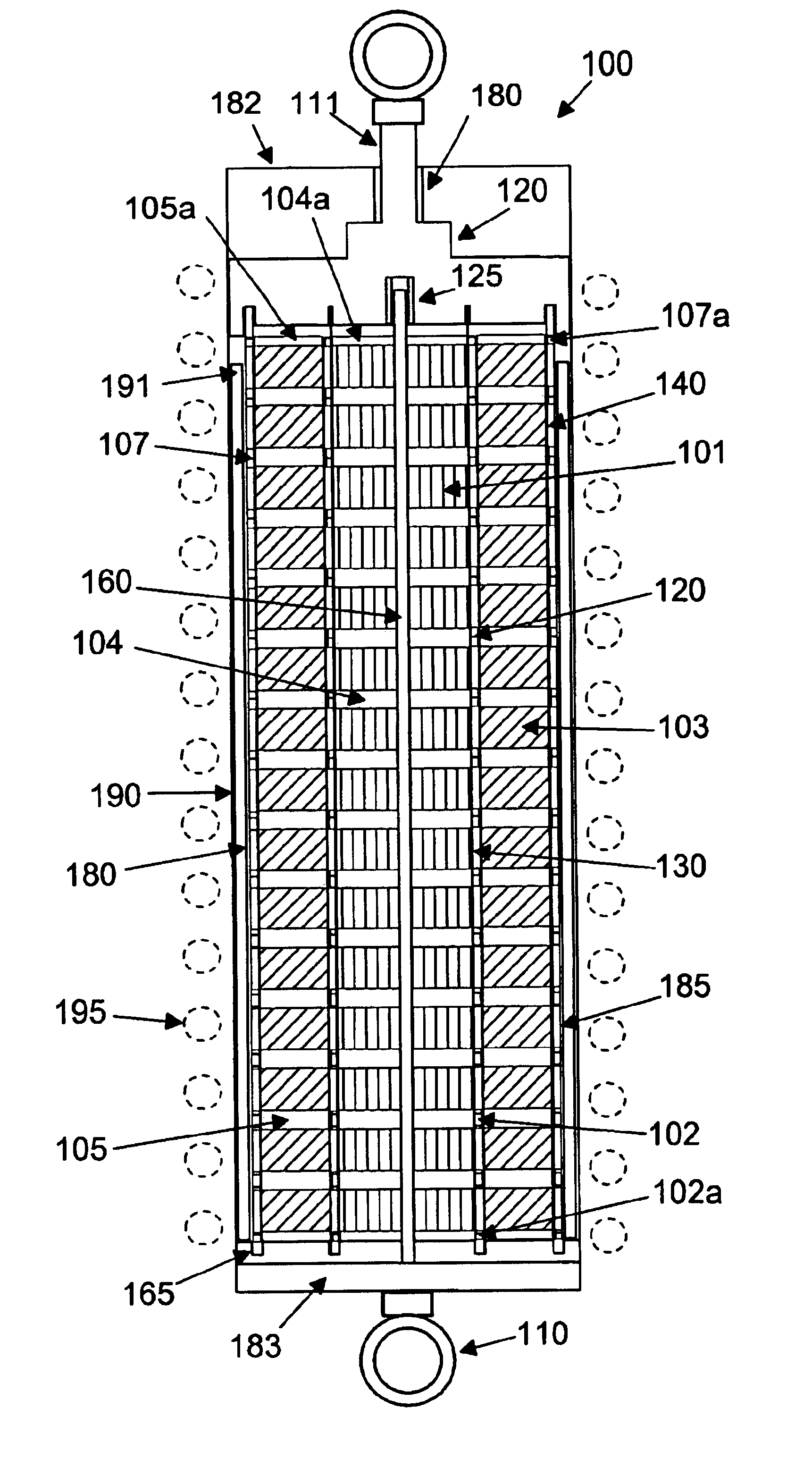Fuel consumption for transportation accounts for a considerable portion of total U.S.
energy consumption.
Energy efficiency in both electric and conventional
gasoline powered vehicles is generally compromised by road resistance with associated parasitic energy losses caused by mechanical displacements produced by road bumps and
road roughness.
The disclosed device consumes rather than generates power.
None of the disclosed devices appear to teach or suggest the use of linear generators as a
shock absorber for damping.
One limitation of the disclosed device is that it does not appear to fully utilize the
magnetic field and flux created by the
magnet array since the generator apparently exploits only single magnetic pole-coil interactions and does not appear to provide for positioning the coil windings in the region of maximum magnetic flux density.
This limitation results in reduced efficiency and power generation capability.
The disclosed device does not appear to fully utilize the
magnetic field and flux created by the
magnet array since the
magnet-coil configuration does not provide for placement of the coil windings in the region of maximum magnetic flux density.
Since Tiemann teaches device enclosures made from ferromagnetic materials to couple to the magnets, the disclosed device will likely produce undesirable eddy currents within the housing
enclosure during operation which will significantly dampen motion of the armature, resulting in reduced current output and compromised power generation capacity.
It is anticipated that these limitations will result in a significant reduction in
energy conversion efficiency and power generation capability.
One limitation of the disclosed embodiments is that they do not appear to fully utilize the
magnetic field and magnetic flux generated from device magnets since the generator designs appear to
exploit only single magnetic pole-coil interactions and do not appear to provide for positioning the coil windings in the region of maximum magnetic flux density.
Since the disclosed device apparently relies on
natural resonance to drive the device with negligible damping provided, it is unlikely that the disclosed device could function as a shock absorber or provide acceptable power generation capacity and efficiency at the variable bump and displacement frequencies anticipated with vehicles under normal driving conditions on typical road surfaces.
Arsem's device apparently suffers several design limitations which compromise its performance.
In addition, the volume occupied by the iron cores within Arsem's stators substantially reduces both the coil volume and magnetic flux density available to the actual
stator coil winding further limiting coil output current and
electric power generating capacity.
Since, as shown in FIG. 4 of '027 to Arsem, the predominant portion of the
stator coil windings are wrapped around the iron
stator cores in a direction perpendicular to the circumferential direction of the induced current flow, most of the coil stator winding volume is wasted since the perpendicularly oriented winding generates essentially no induced circumferential current while substantially increasing coil resistance due to the excessive length of inactive winding, thereby creating undesirable
electric power losses due to the substantial
joule heating energy losses.
Conventional
mechanical devices which attempt to convert suspension displacements from road vibrations and bumps into useful electrical energy suffer from a number of limitations.
Mechanical devices which convert
vertical motion into rotary motion for driving conventional generators or alternators typically employ a complex series of
rack and pinion gears, levers, clutches, shafts, springs and drive belts which typically have a
high weight and space penalty, high mechanical
inertia, high displacement response threshold, slow displacement
response time, large
hysteresis due to requisite mechanical tolerances, and significant energy conversion losses due to heat generated from mechanical friction between components.
Such conventional mechanical motion conversion devices are typically unresponsive to the
high frequency, low amplitude bumps and vibrations which are a predominant source of
road surface roughness and vertical wheel displacements under typical driving conditions.
Thus, such devices would generally provide relatively low average power generation capability and efficiency under typical urban or highway driving conditions.
The performance of these prior art devices is generally compromised by non-optimized magnet and coil placement and magnetic pole orientations, excessive magnet-coil air gaps, underutilized coil volume, excessive coil resistance, unproductive coil winding orientation, a lack of overlap and combination of magnetic fields from multiple magnets for increased magnetic flux density, reduced magnetic flux density within the coil volume, a lack of
accommodation for variable frequency operation to
exploit realistic displacement frequencies and amplitudes, inadequate damping and poor matching of device current and
voltage output to external electrical power requirements.
Thus, conventional regenerative
electromagnetic generator devices do not currently provide for efficient and viable power generation and damping for actual displacements and vibrations encountered under normal driving conditions on typical road surfaces.
 Login to View More
Login to View More  Login to View More
Login to View More 


